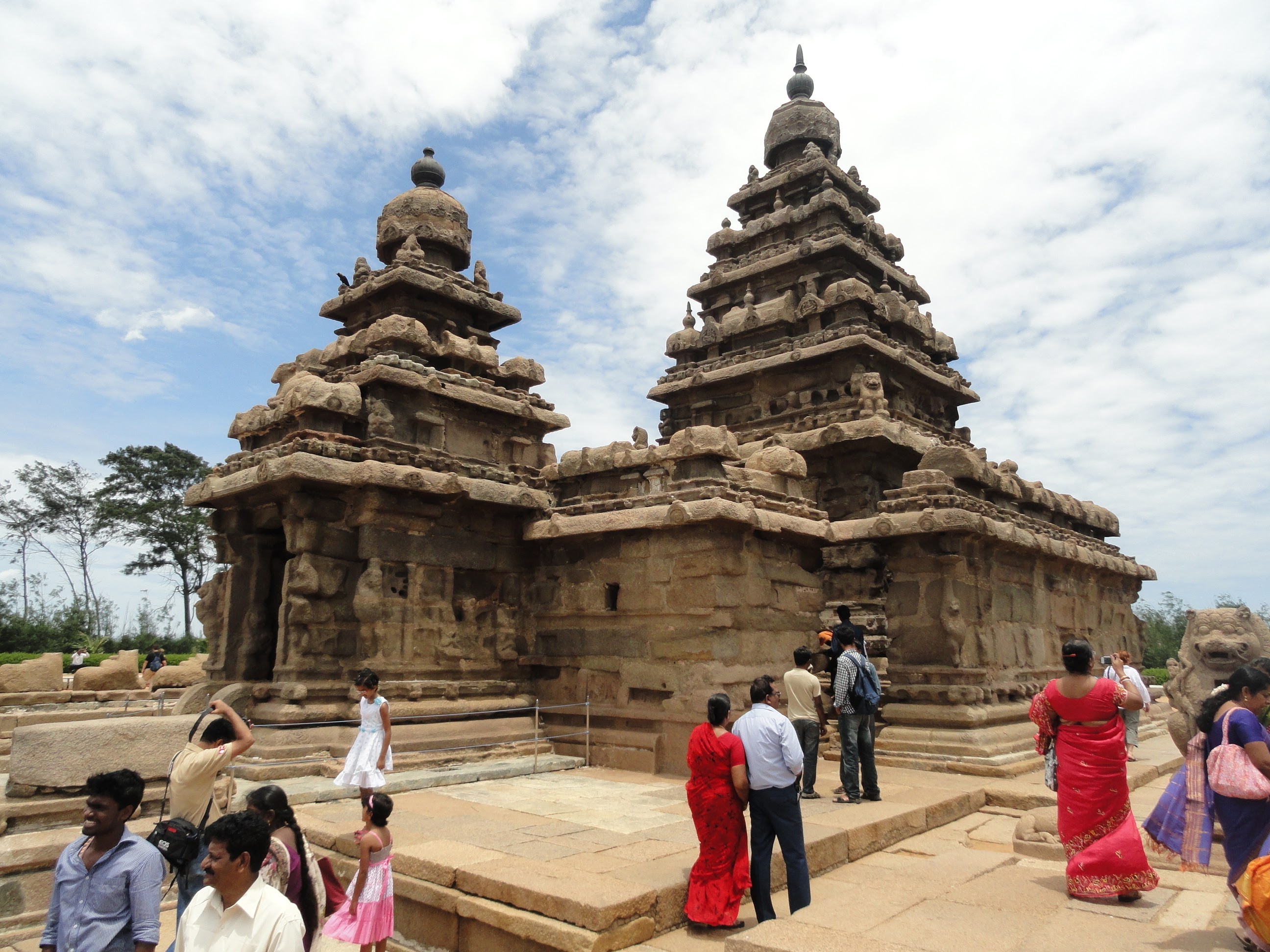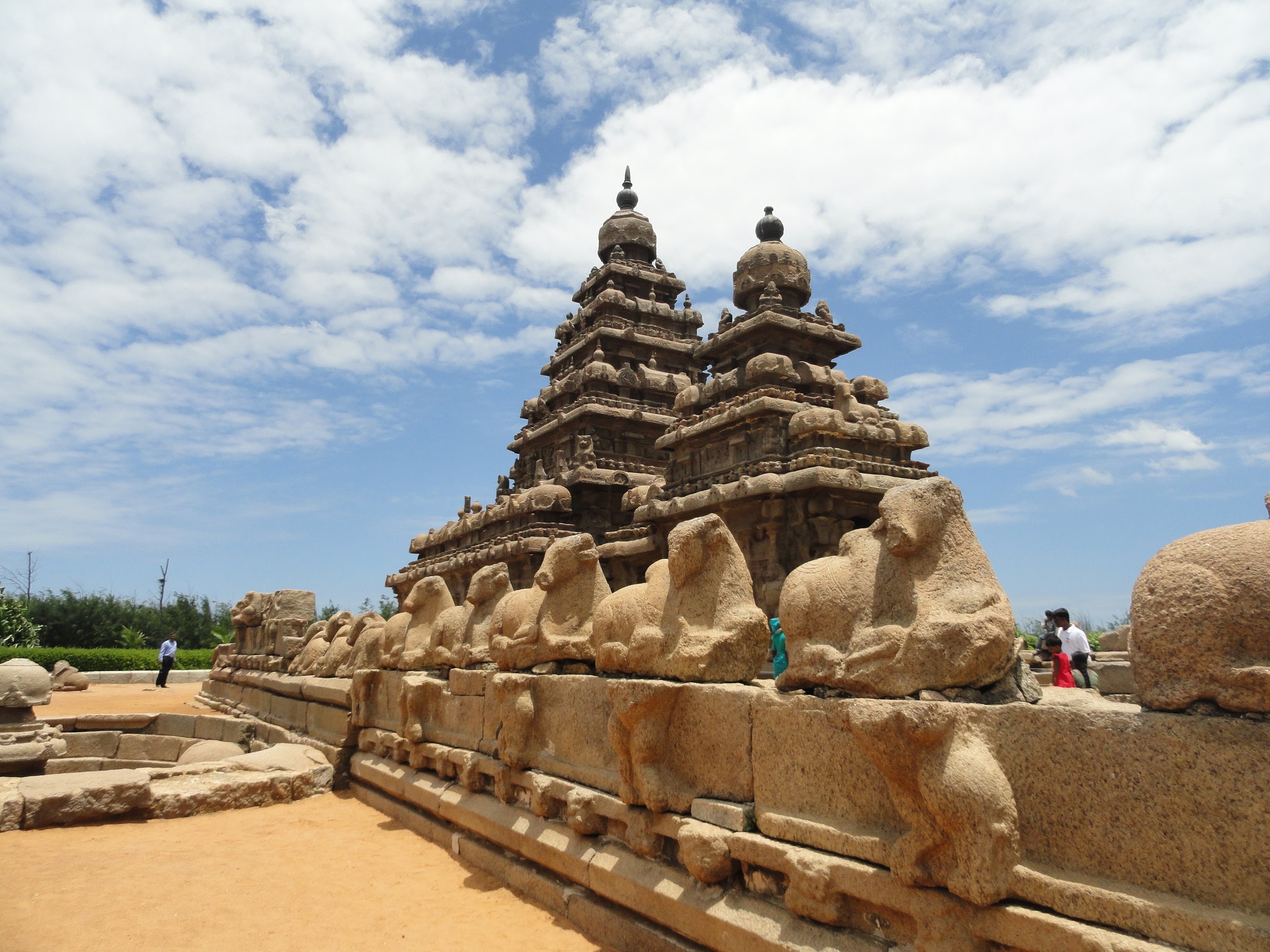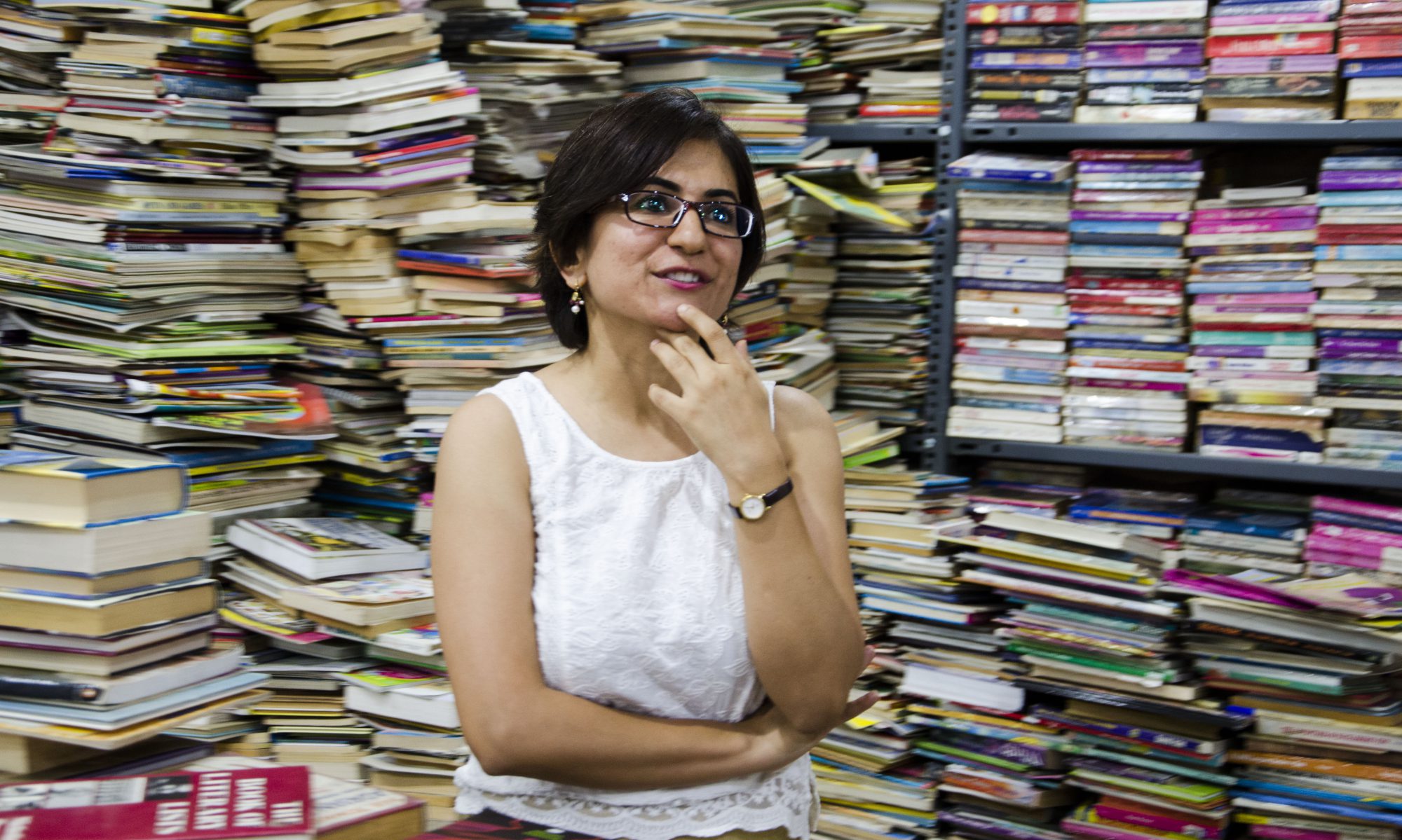A long time ago, seven granite temples stood on the beach of Mamallapuram near Chennai, a port at that time. Myth has it that lord Indra, the god of thunderstorm became so jealous of the town’s beauty that in his anger, he brought out a great storm from the Bay of Bengal, gobbling six of the temples. And so only one remained, the Shore Temple, built on an outcrop of land on the beach, to guide the travellers coming from the sea.
Some 60 kilometers from sweltering Chennai on the East Coast Road, Mamallapuram is more of a popular weekend beach retreat now than a port. Cheap homestays, larger-than-life resorts, backpacker hostels, restaurants and cafes pepper its lanes, each of which weaves down to the sandy beaches. Built by the Pallavas during the seventh century, it used to be a famous trading port on the east coast. Traders and merchants travelled all the way from countries in South East Asia and even the Mediterranean to reach its shores. Legend has it that Marco Polo, the famous Venetian merchant traveller, found his way to this port, marking it on his Catalan Map in 1275. It was during the Pallavas that Sangam literature and Bhakti movement flourished here.

As the weekend crowd fills the site, we take respite from the heat under a tree overlooking the Shore Temple. A UNESCO World Heritage Site, the temple dates back to eighth century AD and is a marvel in granite architecture. With time the restless Bengal Sea’s salty air has ravaged its stone face, making it softer. The walls and columns have become coarse with age, the sculptures soft and porous. For afar it’s blurred, like looking at it with myopic eyes.
A fifteen minute walk from the temple leads you to the spectacularly carved monolith Arjuna’s Penance, a marvellous bas-relief artwork about the origins of river Bhagirathi with an overwhelming narrative containing elephants, deers, temples, rishis, trees, apsaras, divine beings and even the netherworld. The hillock next to it has rock-cut cave temples with bas-relief sculptures of Varaha Krishna carrying a mountain, and the Pandavas, again all etched in a single rock. Overwhelmed by the sheer beauty of the sculptures, we head back to the beach, to watch the evening play of waves as we cool our tired heels with a cold drink and a book on ancient maritime history.
Before it was known as Mamallapuram, the port city was named Mahabalipuram, literally the ‘city of the great Bali’ by Pallava kings and Seven Pagodas by the seafarers who reached its shores. Why seven when now you see only one now? The legends of the missing temples refuses to go. We walk to the beach, where tired fishermen rest after a day’s catch, singing tales of drowned sculptures and ceilings glittering beneath the waves, like coral reefs. In 2004, when the shoreline receded during the voracious tsunami, tourists claimed to have seen a long row of granite boulders emerge from the sea, before they were swallowed again. Now historians think, the port might be older. Earlier in 2016, underwater explorations by a group from National Institute of Oceanography, found a short flight of stairs, brick structures from 200 AD and chiseled stone blocks scattered on the seabed, all covered with mould. This, nearly 800 meters from the shoreline at a depth of 27 feet. So did Indra see the green-eyed monster and strike down an ancient port? Or did the rough sea claim its share from humanity? I look at the timelessly crashing waves and wonder how many more marvels lie hidden beneath its rough surfaces, waiting for our divers to discover. Perhaps we shall never know.

Also published in Discover India 2016
